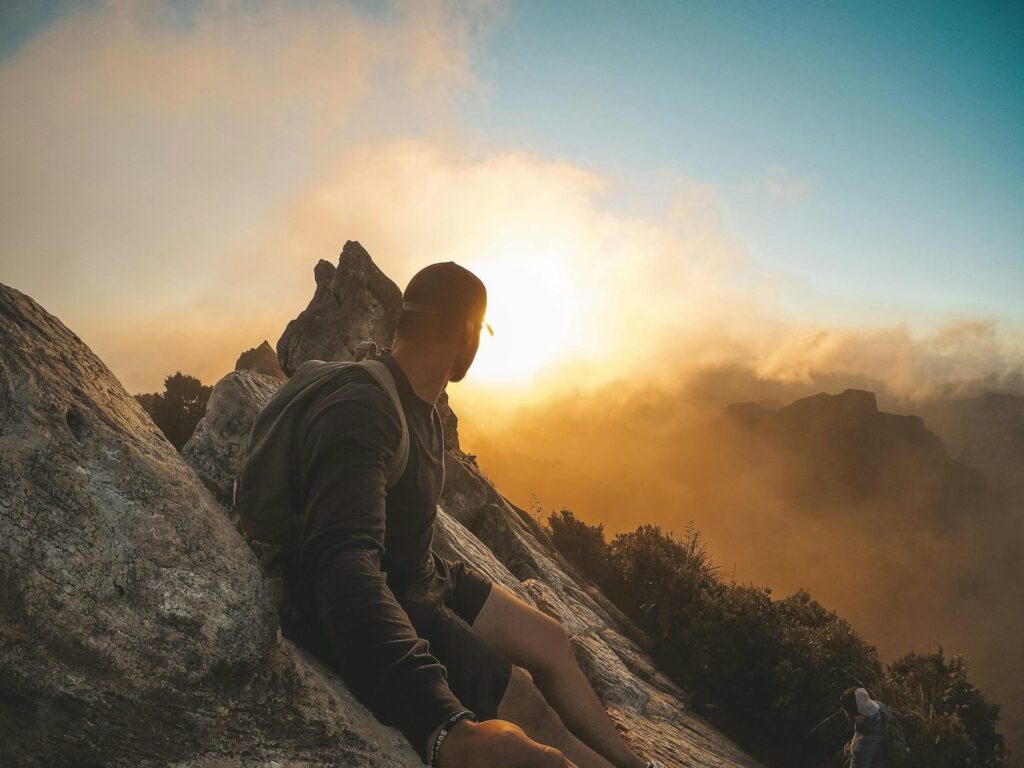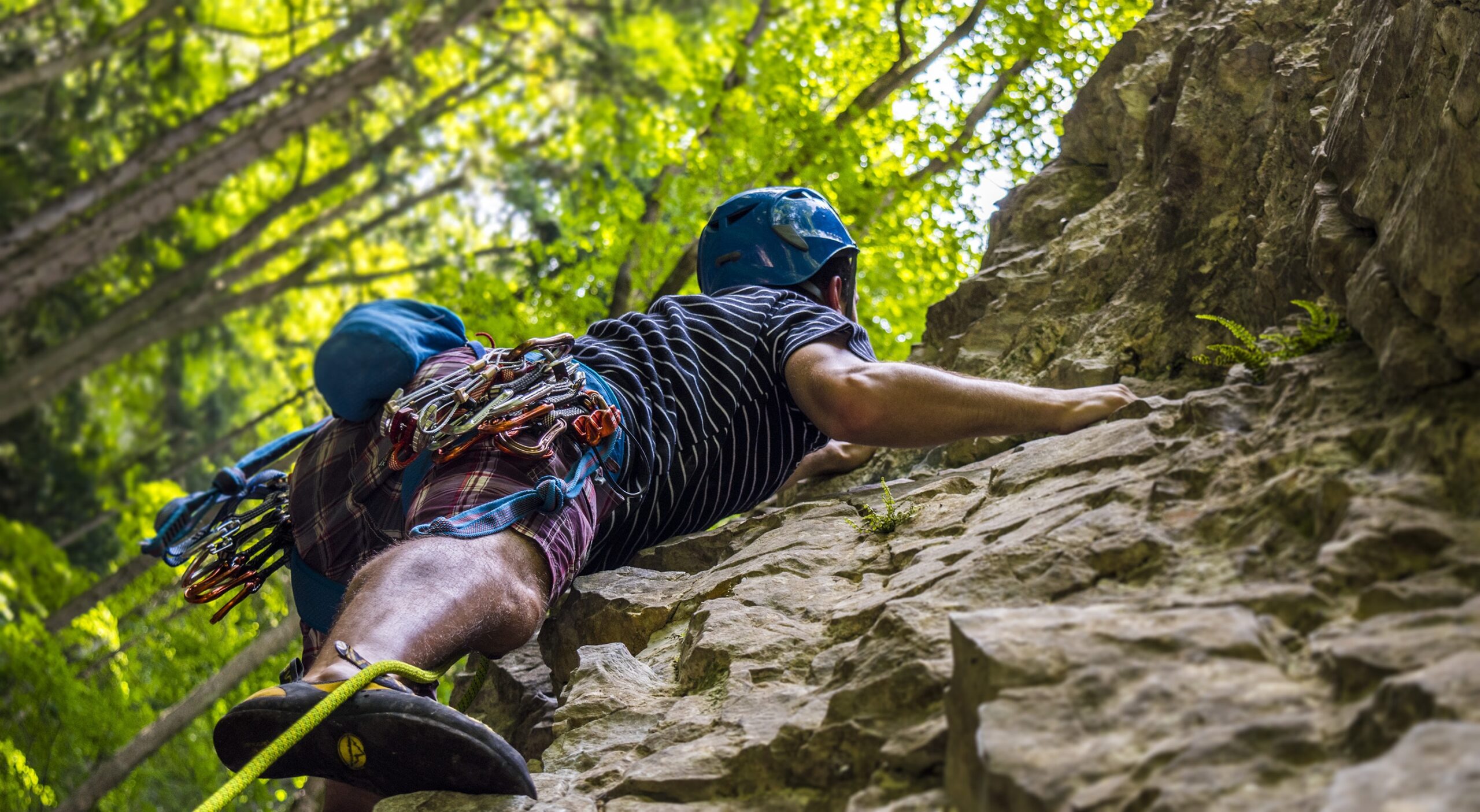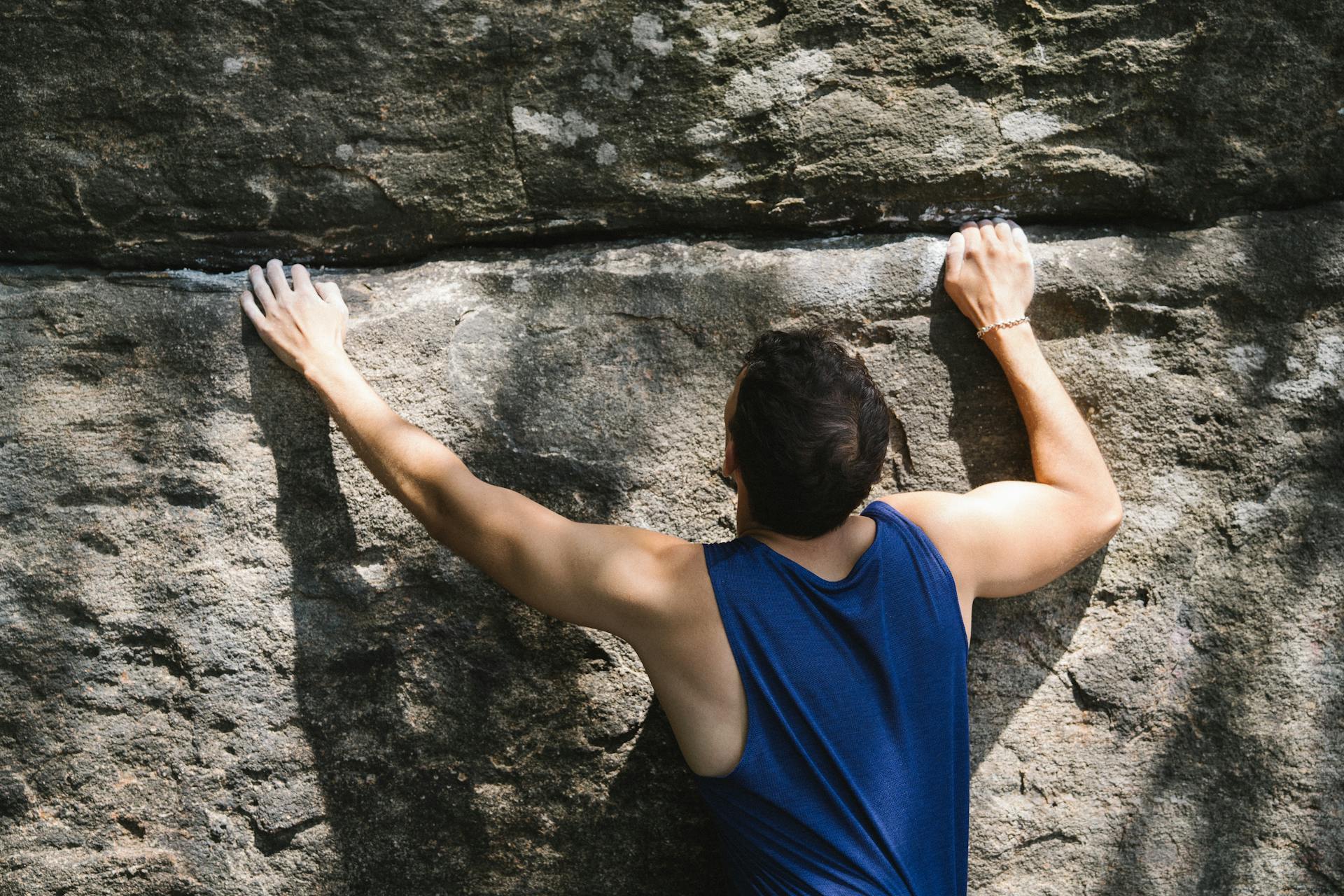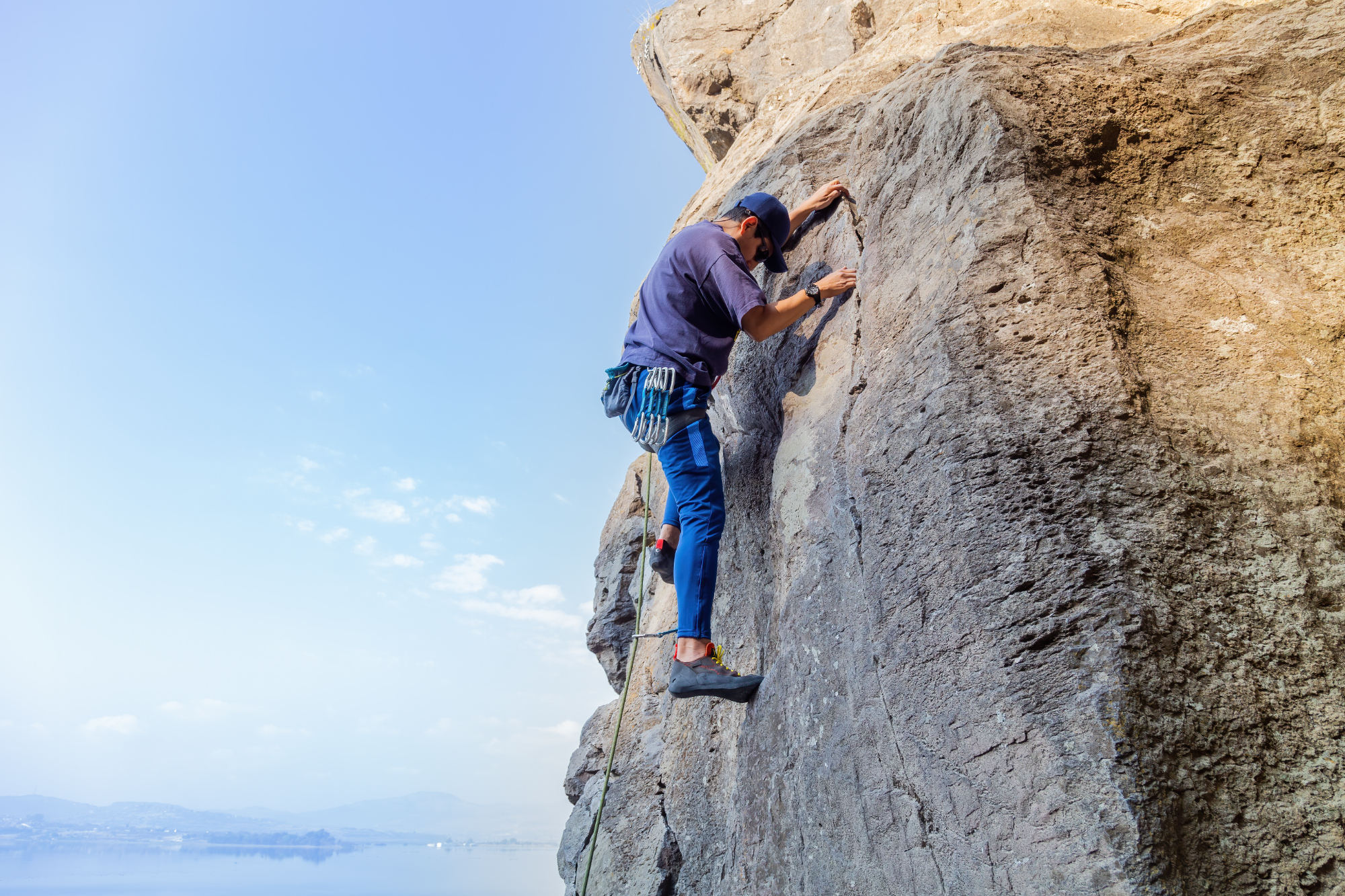Free solo climbing is a thrilling adventure that has become a dream for adventure lovers. But it is not just a way to get an adrenaline rush, rather it is an activity that requires a perfect combination of skill, strategy and safety. If you are a beginner and want to start free solo climbing, it is very important for you to keep in mind the safety tips.
Free solo climbing means climbing without any safety rope or harness, which makes it a high-risk activity. But this does not mean that beginners cannot enjoy it. If you follow the right preparation and safety measures, you too can enjoy this exciting sport.
In this article, we will discuss the essential safety tips every beginner should know. This guide will teach you everything from mental and physical preparation to avoiding common mistakes. So let’s get started on a safe and adventurous climbing journey!
What is Free Solo Climbing?
Free solo climbing is a climbing technique in which the climber relies solely on his physical strength and mental focus, without any rope, harness, or safety gear. It is a high-risk sport recommended only for experienced and mentally strong climbers.
There is one major difference between free soloing and other forms of climbing such as sport climbing or bouldering – the absence of safety equipment. In sport climbing, climbers use ropes and harnesses, whereas bouldering is done at lower heights with pad protection. But in free solo climbing, the climber relies solely on his skill and ability to understand the environment.

The biggest attraction of this sport is its thrill and sense of freedom. World-famous climbers like Alex Honnold have taken this art to a new level, such as his iconic climb of El Capitan. But, beginners need to understand this adventure and prepare properly beforehand.
The biggest challenge of free solo climbing is its inherent risk. Even a small mistake can be life-threatening. So, it’s important to understand that this activity is only for people who want to test their physical fitness and mental strength. If you’re a beginner, enter the world of free solo climbing only after gradually gaining experience and following proper safety tips.
Essential Preparation Before Free Soloing
Free solo climbing is a thrilling sport, but proper preparation is a must before starting. If you are a beginner, focusing on mental, physical and environmental factors is crucial for your safety and performance.
Building Mental and Physical Strength
For free solo climbing, you need to have a balance between your mental focus and physical strength. You need to control fear and develop self-confidence. Train regularly to improve grip strength and body flexibility. Exercises such as pull-ups, planks, and fingerboard training can improve your climbing efficiency.
Analysis of Climbing Routes
For free soloing, it is important to have a deep understanding of the route. Before climbing, analyze the terrain and identify difficult spots. Use guidebooks and climbing apps to learn about routes. Visually inspecting the route and mentally rehearsing it will give you an edge.

Focus on gradual progression
Choosing tough routes directly can be dangerous for a beginner. Choose easier routes to build confidence and improve skills. For beginners, it is beneficial to try partner climbing or bouldering first so you can gain experience and knowledge of basic techniques.
Proper nutrition and recovery
Free solo climbing is a physically demanding sport, so it is important to maintain proper diet and hydration. Be sure to do stretching and recovery exercises after the climb to avoid injuries and maintain your performance.
Environmental Awareness
Checking the weather conditions is the most important step before climbing. Wet surfaces, strong winds, or extreme heat can make climbs dangerous. Inspect the conditions of the route first and plan to climb only in favorable weather.
Equipment for Free Solo Climbers
Free solo climbing does not require safety ropes and harnesses, but there is some essential equipment that can improve your performance and safety. Choosing the right gear for beginners makes the climbing experience smoother and more effective.
Climbing Shoes
The most important thing for a climber is climbing shoes. These help you with proper grip and foot placement. The size of your shoes should fit snugly, so that you get better control. For beginners, versatile shoes are ideal that are suitable for different terrains.

Chalk for Better Grip
Sweaty hands are a common problem when climbing that can compromise grip. Chalk is the solution to this problem. The chalk keeps your hands dry and strengthens your grip. Attach a chalk bag to your waist for easy access while climbing.
Lightweight and Flexible Clothing
For free soloing, you should choose comfortable and flexible clothing. Lightweight materials that absorb sweat and give you a full range of motion are the best choice. Avoid bulky clothing that can restrict your movements.
Emergency Essentials
Emergency preparedness is important because of the inherent risks of free solo climbing. A small first aid kit, energy bars, and a lightweight phone holder should be on your essentials list. When you are going to climb, be sure to inform a trusted person of your route and timing.
Key Safety Tips for Beginners in Free Solo Climbing
Free solo climbing is a thrilling and rewarding activity, but safety is of utmost importance for beginners. If you want to start this adventure sport, make sure to follow these safety tips. They will not only keep you safe but also enhance your climbing skills.
Understand your limits
When free solo climbing, it is important to understand your abilities and limits. If you do not feel confident about a climb, avoid it. For beginners, it is ideal to practice on easy routes. Gradually you can push your comfort zone, but always keep your physical and mental capacity in mind.
Learn from experienced climbers
Free solo climbing is a high-risk activity, so beginners should learn from professionals. Attend climbing workshops or tutorials. Observe the techniques and strategies of experienced climbers. This will help you understand correct posture, balance and movement techniques.
Pay attention to weather conditions
Weather is an important factor for free solo climbing. Never climb in bad weather conditions (such as rain, strong winds, or extreme heat). Wet rocks can be slippery, which increases the risk of accidents. Always check the weather forecast before climbing and wait for favorable conditions.

Get complete information about the route
Knowledge of the route is essential for free solo climbing. Analyse the route before you climb. Identify difficult sections and risky spots in advance. Test your skills on practice climbs or mock routes. Using guidebooks and climbing apps can be helpful for beginners.
Learn to control fear
Fear is natural when climbing free solo, but it needs to be controlled. Deep breathing and mental visualization techniques can help keep you calm and focused. If you get nervous, stop and relax and plan your moves carefully. Avoid attempting a climb without confidence.

Give importance to proper recovery and rest
Free solo climbing is physically demanding, so recovery is essential. Stretch after the climb and maintain proper hydration and nutrition. Take sufficient rest so that your body can fully recover and avoid injuries. Overtraining should always be avoided.
Always make backup plans
Never attempt any free solo climb without a backup plan. If something unexpected happens while climbing, have an idea of escape routes. Be sure to inform a trusted person about your route and timing.
Become part of the climbing community
Joining a community of free solo climbing enthusiasts can be very helpful for beginners. You get tips from experienced climbers and feel like you have a support network.
Build Gradual Confidence
Attempting tough climbs directly can be dangerous for beginners. Start with easy climbs and gradually improve your skills and confidence. With regular practice and a positive mindset, you can achieve long-term success.
Common Mistakes Beginners Make in Free Solo Climbing
Free solo climbing can be a challenging and risky activity for beginners, especially if you don’t pay attention to avoiding common mistakes. If you want to take this sport seriously, it is important to know which mistakes to avoid. This is important for both your safety and climbing performance.
Ignoring proper preparation
Free solo climbing is done without any safety equipment, so the importance of preparation is even greater. Beginners often skip warm-up exercises or route planning, which is a big mistake. Stretch your body and prepare your muscles before each climb. Detailed knowledge of the route and analysis of environmental conditions is also essential.
Overestimating Your Limits
Many beginners overestimate their skills and start climbing difficult routes. This can be a fatal mistake. Always start with easy routes and gradually push your limits. Overconfidence increases the chances of accidents.

Not handling fear properly
Fear is a natural emotion, especially in risky sports like free solo climbing. But many beginners panic or ignore the fear, which forces them to make unsafe decisions. To handle this situation, use mental training and relaxation techniques, such as deep breathing and visualization.
Considering Weather and Environmental Hazards
Bad weather conditions can be extremely dangerous for free solo climbing. Wet surfaces, strong winds, and extreme temperatures can pose major challenges for beginners. Climbers who ignore weather forecasts or terrain conditions have a higher risk of accident. Always climb in safe weather conditions.

Not Giving Importance to Proper Recovery
Many beginners overstrain their bodies by constantly climbing and neglect rest. This can be a major cause of injuries and fatigue. Make proper stretching, hydration, and nutrition part of your routine after climbing. Regular recovery is important for your long-term climbing goals.
Not Seeking Professional Guidance
Free solo climbing is a sport where experience and technical knowledge are very important. But many beginners start climbing without professional guidance. This can be a dangerous decision. Seeking guidance from experienced climbers or instructors is the safest approach for beginners.
Not Making Backup Plans
Free solo climbing is inherently risky, and many beginners climb without backup plans. This is a big mistake. Always inform a trusted person about your climbing route and expected timing. It is equally important to pay attention to escape routes and emergency strategies.
The Mindset of a Free Solo Climber
Free solo climbing is not just a test of physical strength, but also of mental strength and determination. It is a sport that challenges your fears and tests your focus. For beginners, developing a strong mindset is as important as mastering climbing skills.
Confidence and Self-Belief
Self-confidence is the most important thing in free solo climbing. You must have faith in your abilities. If you feel doubtful during your climb, it can cause distraction and mistakes. Confidence builds gradually, so focus on small successes and celebrate your progress.

Accepting Fear
Fear is a natural emotion that makes you cautious. But beginners often suppress fear or panic. It is important for a free solo climber to accept fear and deal with it calmly. Mental techniques like deep breathing and positive visualization can help you control fear and stay focused.
Staying in the Present Moment
There is no room for distraction while free solo climbing. You have to focus 100% on every move and hold. Mindfulness and the practice of staying in the present moment will keep you calm and aware. Meditation and visualization exercises are helpful in developing this mindset.
Taking Calculated Risks
Free solo climbers always take calculated risks. You should understand your limits and always attempt the climb in which you feel confident. Overconfidence or avoiding unnecessary risks is a sign of a strong mindset.
Conclusion
Free solo climbing is a thrilling and rewarding adventure, but it also comes with a lot of risk. Beginners need to start their climbing journey with safety and proper preparation. Whether it’s your physical strength, mental focus, or selection of the right equipment, each factor has a direct impact on your safety and performance.
In this guide, we’ve talked about essential preparation, mindset, safety tips, and common mistakes every beginner should know. The thrill of free solo climbing can only be enjoyed if you’re well-prepared and mindful of your limits. Always take calculated risks, seek from experienced climbers, and make gradual progression your mantra.
Remember, free solo climbing is not just a sport, but a way of life and a discipline. It is only fun when you constantly improve your skills and learn something new with every climb. Never compromise your safety and always climb with a mindful attitude.
If you are a beginner, begin this journey with patience and perseverance. With the right mindset and approach, you too can become a confident and skilled free solo climber.




